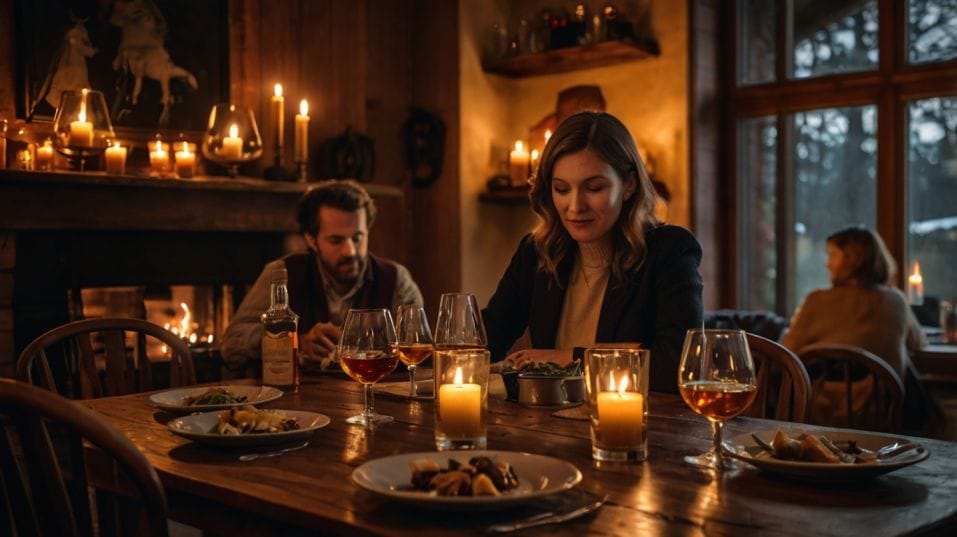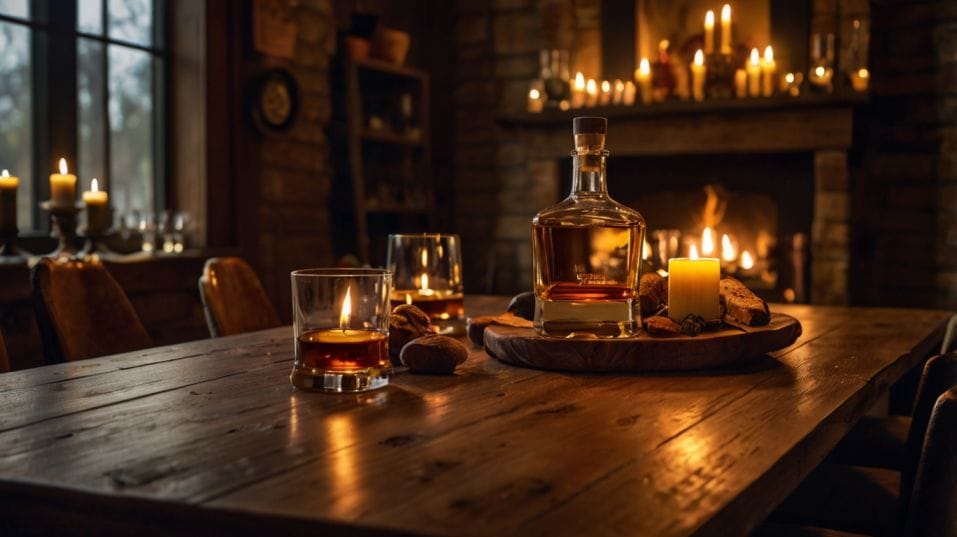How to Host a Whiskey and Food Pairing Night
Discover how to host a whiskey and food pairing night that sharpens your palate, boosts confidence, and turns tasting into a skill.

Ever wonder why a whiskey suddenly lights up on your tongue after a bite of cheese or charred meat? That’s flavor chemistry in action—and it’s where real whiskey insight begins.
If you're ready to move beyond hype bottles and actually understand what’s in your glass, hosting a whiskey and food pairing night is the smartest step forward.
It’s not about fancy menus. It’s about unlocking flavor, sharpening your palate, and tasting with purpose.
Set the Right Intention
Start with this: you’re not throwing a party. You’re building a tasting lab—with flavor, not formality.
Whether it’s two guests or ten, the goal is the same: learn what whiskey does on the palate, and what food does to whiskey. That’s it. Everything else—playlist, glassware, cheese boards—is secondary.
Don’t worry about rules. There’s no perfect menu or whiskey lineup. But there are fundamentals that will help you get real value from the night.
Choose your focus
Are you trying to explore regional styles (Scotch vs bourbon vs Japanese)? Understand wood influence (ex-bourbon cask vs sherry)?
Compare proof, peat, or grain? Start with one theme and build around it. Not only does this sharpen your selections—it gives your guests something to follow and react to.

Build a Lineup with Intention
Now choose the whiskeys. You want range, but not chaos. Think in terms of structure: high proof vs low proof, smoke vs no smoke, sweet vs dry, delicate vs bold. Even with just three to five pours, you can tell a full flavor story.
You’re not showing off your shelf. You’re giving your palate contrast points. That’s where learning happens.
Some basic pairing principles to keep in mind
- Fat softens heat. High-proof whiskeys feel rounder with rich, fatty foods—like pork belly, foie gras, triple cream cheese, or even fried chicken.
- Salt boosts sweetness. Salty items (cured meats, olives, aged cheese) can draw out vanillas and caramels in bourbon or corn-heavy mash bills.
- Acid cleans the palate. Pickled vegetables, citrus zest, or sharp vinaigrettes reset your tastebuds and keep palate fatigue at bay.
- Sweet plays both ways. Sweetness in food can either complement (think dark chocolate with sherried Scotch) or mute (vanilla cupcakes with rye—not ideal) depending on what’s in the glass.
- Smoke craves either contrast or echo. Pair peated Scotch with creamy textures (soft cheese, chowder) or go the other way—charred meat, smoked salt, roasted mushrooms.
Start by selecting the whiskeys. Then build the food around them—not the other way around.
Prep Like a Pro (Without Overthinking It)
You don’t need a tasting table lined with slate, candles, and hand-lettered menus. You need clarity. Good glassware. Room to explore. Here’s what actually matters:
Glassware
Use tulip-shaped glasses, Glencairns, or anything with a narrow rim to focus aroma. If all else fails, small wine glasses work fine.
Portion control
Half-ounce pours are enough. It’s not about volume. It’s about tracking how the whiskey evolves—first sip to last.
Food prep
Serve food in small bites. Think tapas size. Easy to handle. No utensils unless necessary. Each pairing should be manageable in a single bite or two.
Water
Always available. Still and sparkling. Clean your palate, refresh your guests, and keep the focus on flavor.
Create a clean tasting flow—whiskey, bite, re-taste. Encourage revisits. That’s where most people actually connect flavor dots: the second pass, not the first.
Be a Host, Not a Tour Guide
You’re leading, not lecturing. Set the tone by offering just enough context to frame each whiskey—origin, style, mashbill, maybe cask type. Keep it tight. No need to read off tasting notes or recite distillery lore.
Let your guests do the work. Ask simple, open-ended questions:
- “What changed when you took that bite?”
- “Does it feel hotter, sweeter, longer?”
- “What pairing surprised you most?”
Encourage disagreement. Tasting is subjective—but guided tasting has purpose. The more people talk, the more they learn. And so do you.
Embrace Contrast, Curiosity, and “Bad” Pairings
You learn the most from what doesn’t work. That’s why a good whiskey pairing night isn’t a flawless harmony parade—it’s a series of small, meaningful experiments.
Try a pairing that clashes. See how a smoky Scotch shuts down a sweet custard. Taste how tannic cask influence kills a vinaigrette. Then compare it to a better match. The key is to notice why something works—or doesn’t.
You’ll start building a map in your head: what bourbon does with fat, what malt does with spice, what peat does to fruit. That’s tasting fluency. That’s how a collector becomes a connoisseur.
Go Deeper (If You Want)
Once you’ve hosted a few of these, you can start adding layers.
- Introduce blind tasting. See how people respond when they don’t know what’s in the glass.
- Explore single elements. Try a series of food pairings with just one whiskey to isolate how flavor changes.
- Reverse engineer. Taste a whiskey first, then build a food bite to match. More advanced—but deeply rewarding.
Use what you learn to refine your buying. You’ll stop impulse-shopping for shelf trophies and start collecting with intent—knowing which bottles perform well, pair well, or teach you something new.
Final Thoughts
A whiskey and food pairing night isn’t about the menu. It’s about the method. You’re building sensory awareness.
You’re testing reactions. You’re creating connections between aroma, texture, heat, and flavor. Whether you’re new to whiskey or two hundred bottles deep, that kind of focused tasting builds real skill.
So don’t wait for the perfect lineup or the perfect crowd. Choose three whiskeys. Make a few sharp, salty, or fatty bites. Ask real questions. Pay attention. Start tonight. Your palate is ready.




